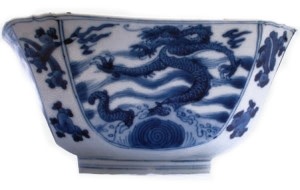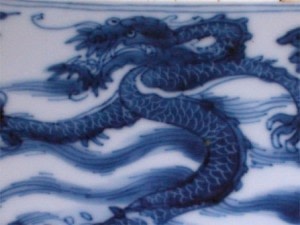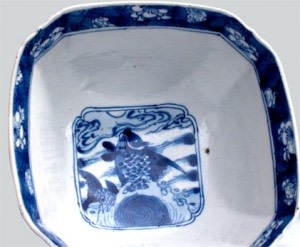Further images
Of canted square form, the flaring sides painted with alternate panels of carp and dragons emerging from rolling waves, divided by flowers and emblems, the interior with a central panel of a carp in the waves, beneath a prunus and cracked-ice border.
Literature
For a bowl of similar form, see Jorg 'Chinese Ceramics in the Collection of the Rijksmuseum, Amsterdam: the Ming and the Qing Dynasties', published 1997 Rijksmuseum, plate 99 page 105, where he dates it to circa 1700.
See also Anita Gray's catalogue, plate 28, page 28, discussed by Margaret Medley in the article accompanying the illustration, where she states that this is characteristic of the fully developed seventeenth century Kangxi style and would agree with Jorg to a dating of around 1700. She also discusses the symbolism, and we quote: 'On these are carp and dragons panels, which represent the aspiring scholar who passes his civil service examinations and qualifies for high office; he starts as the carp, who on leaping the dragon falls (i.e. the examinations), changes into a dragon.'






